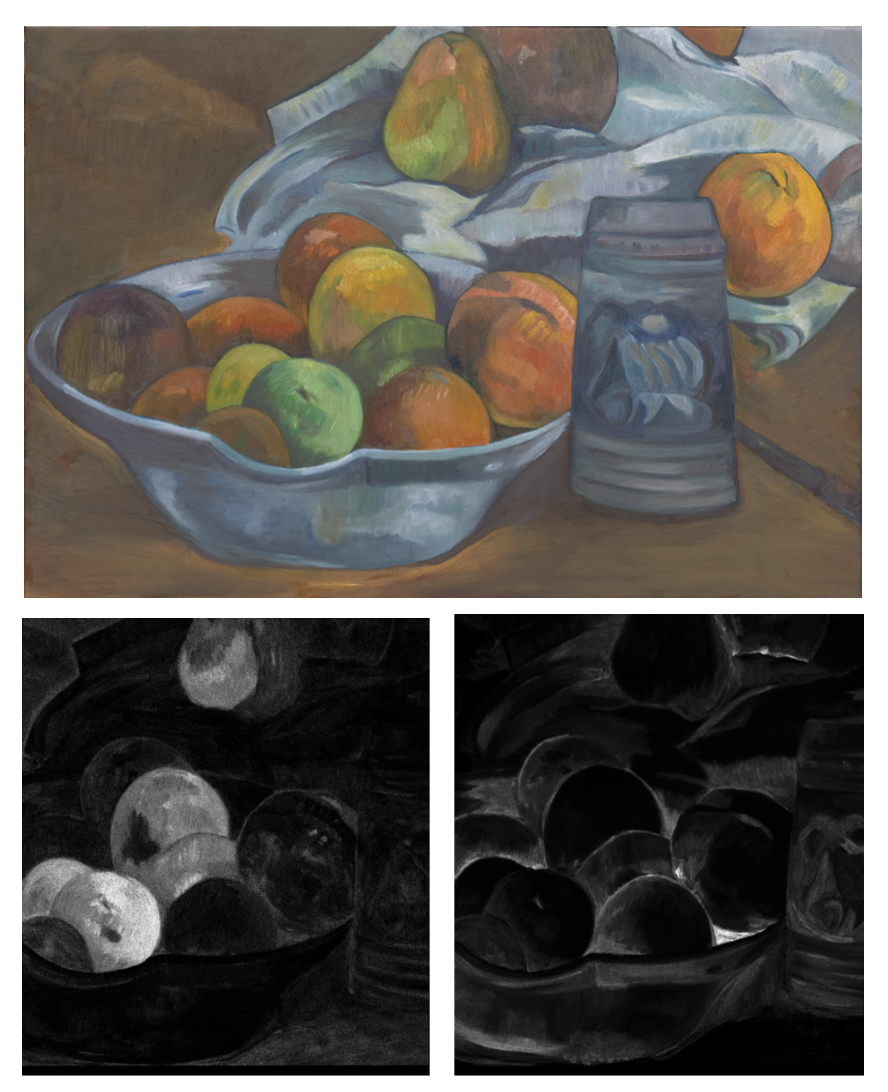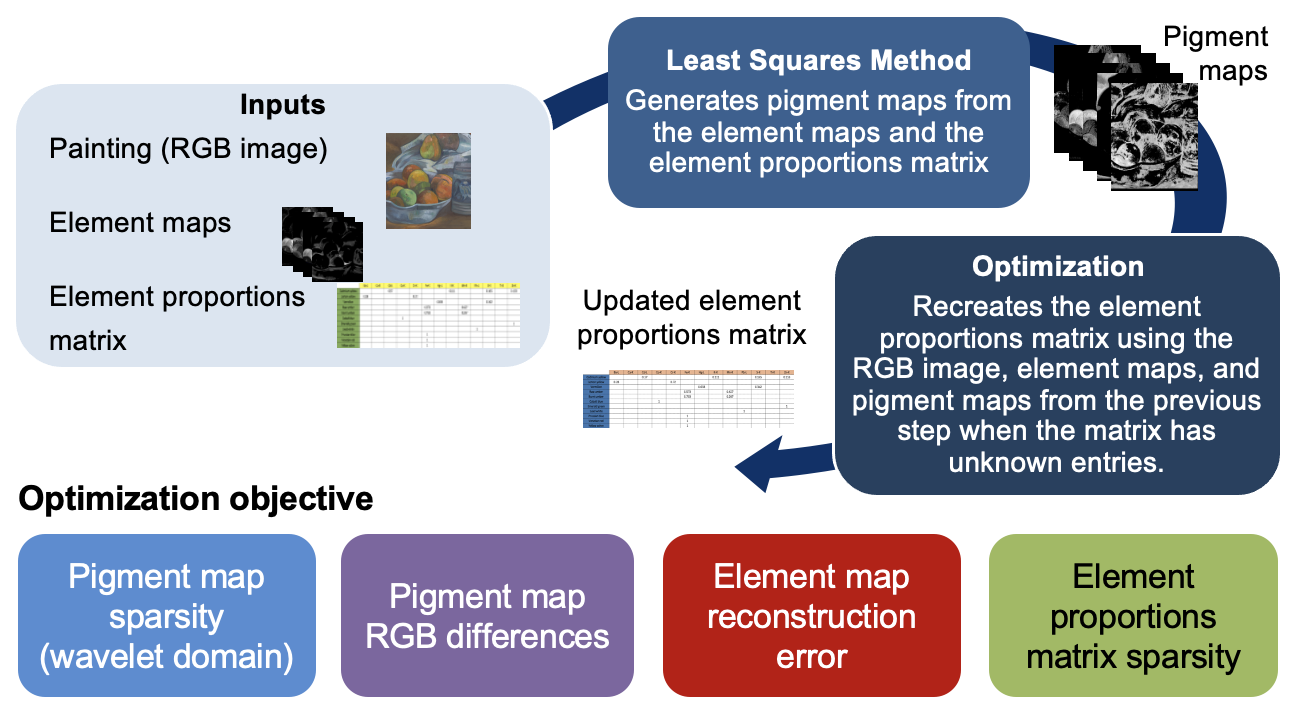Pigment Separation Using X-Ray Elemental Maps of a Painting
Context and Problem
As a painting ages, parts of its pigment layers fall off or lose their original colors, due to chemical interactions with the surrounding environment. To repair a damaged painting, art conservators and restorers fill in its areas of paint loss or repaint discolored areas. Identifying the pigments used when creating a painting as well as differentiating between retouched and original areas of a painting are crucial in preserving it, reviving it, and understanding its history.
Macro XRF in the Context of Art Investigation

In recent decades, non-invasive material detection techniques
(e.g. X-ray fluorescence, abbreviated as XRF) have gained attention throughout the cultural
heritage scientific community.
In the context of art conservation, these techniques allow the detection of
elements present in paintings under study as in the figure above
(Top: RGB image of a test painting prepared at the National Gallery, London.
Bottom: MA-XRF element distribution maps,
which identify areas where different chemical elements are present
in the scanned region of the painting.
In this case, the lighter areas in the panels indicate the presence of barium (bottom left)
and of cobalt (bottom right)).
More precisely, algorithms designed for material detection process the XRF “data cube”
and provide elemental maps as in the image above indicating the presence of
various elements across a painting.
However, even with the help of elemental maps, it is still
a challenging task to identify pigments (compounds or
mixtures of compounds that consist of several elements)
and distinguish retouched areas, based on the scrutiny of elemental maps one by one.
Mathematical Optimization Model for Pigment Map Generation
In collaboration with Prof. Barak Sober (former mathematics professor at Duke University), Prof. Ingrid Daubechies (mathematics professor at Duke University), and researchers at the National Gallery, London, I developed an algorithm that takes as its inputs elemental maps of a painting and the painting's RGB image to generate images showing areas where certain pigments were used. The algorithm uses our basic assumption visualized below; a painting is composed of pigments, and a pigment is composed of chemical elements.

The algorithm, whose structure is visualized below, takes three inputs:
- RGB image of the input painting
- Element maps of the input painting. Each of these maps shows where a specific chemical element is present in the painting.
- Element proportions matrix, whose row represents a pigment and column represents a chemical element. The number at the intersection of row A and column B would be the proportion of the element B in pigment A. Because it is often difficult to trace information about chemical compositions of historical pigments, some entries in this matrix are unknown.

Using those three inputs, the algorithm uses an iterative process to achieve the following goals:
- Generate pigment maps, each of which shows areas in a painting where a specific pigment is present.
- Fill in unknown entries in the element proportions matrix.
Each step in the iterative process can be broken down into the following:
- Use the least squares method to generate intermediate pigment maps. As the inputs of the method, use the input element maps and the element proportions matrix, which is initially given as the input but is modified throughout the iterative process as its unknown entries are filled out
- Use the optimization process to figure out unknown entries in the element proportions matrix. As a result of this optimization, a new element proportions matrix is generated.
- With the original input element maps and RGB image and the new element proportions matrix generated in step 2, repeat steps 1-2 until the sum of all error terms converges.
The output pigment maps can be used by art investigators to both “read” the pigments that the artist used to create the painting and identify retouches or fills in an automatic fashion.
Conclusion
This project gave me meaningful opportunities to work with professionals in art conservation, mathematics,
and computer science. While solving problems in art conservation with them, I was inspired to
discover more ways to use mathematics and computational imaging technologies to address interdisciplinary challenges.
I presented this project in a poster at the International Conference on Computational Photography (ICCP) in August 2022.
The poster was selected for a spotlight talk, which you can watch here.